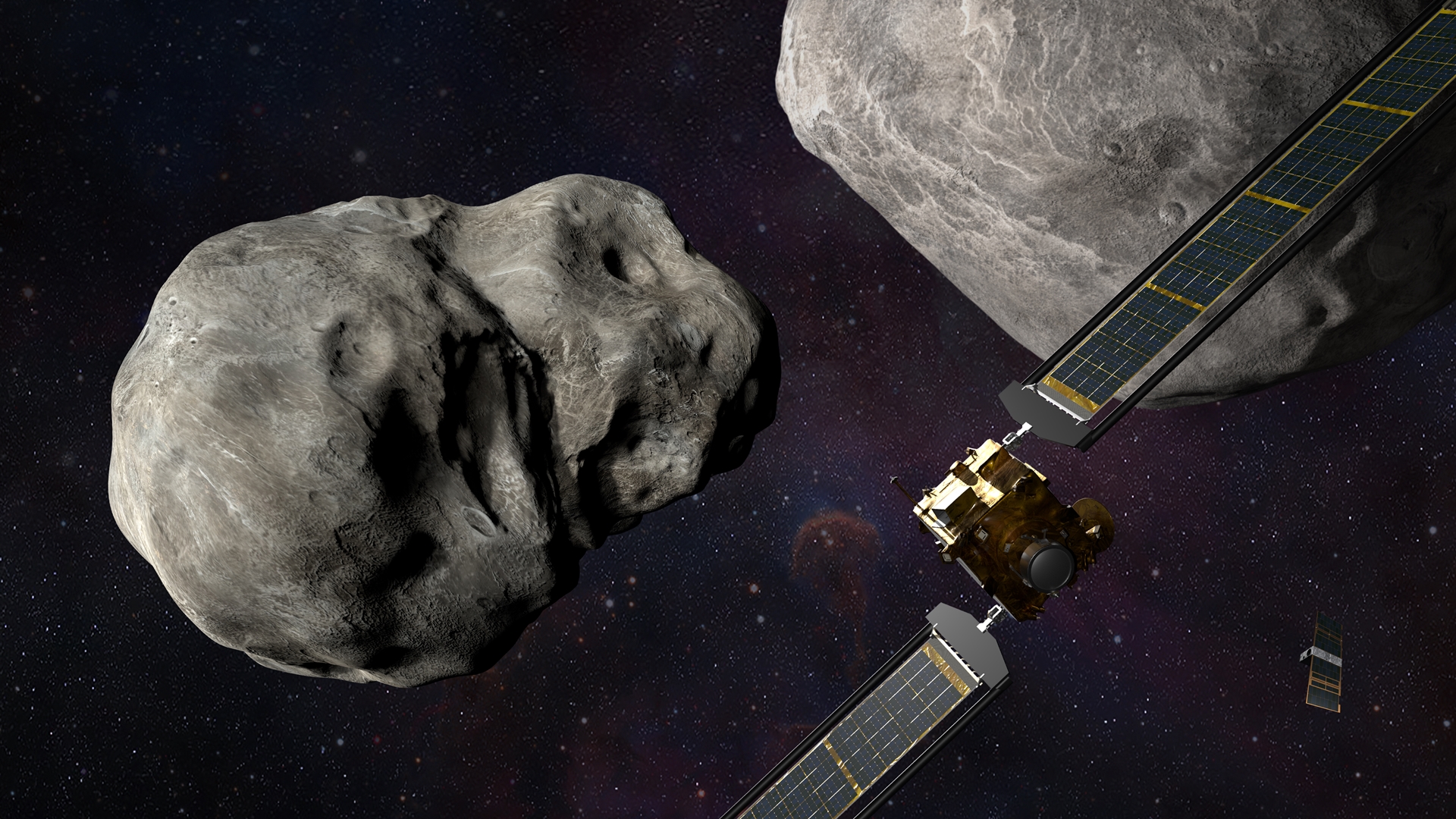On 23rd November NASA will be launching a mission that could save Earth from an asteroid impact, provided it works.
The mission is called the Double Asteroid Redirection Test (DART) and it will evaluate solutions that prevent an asteroid from hitting Earth.
DART makes use of the kinetic impactor technique which is a fancy way of saying NASA is going to fling a big ol’ rocket at an asteroid.
“Kinetic impaction involves sending one or more large, high-speed spacecraft into the path of an approaching near-earth object. This could deflect the asteroid into a different trajectory, steering it away from the Earth’s orbital path. NASA demonstrated on a small scale with the Deep Impact mission of 2005. If preparations were made in advance so that kinetic impactors were available upon detection, the National Academy of Sciences would require a warning time of at least 1 to 2 years for smaller asteroids,” NASA explains.
While this solution works for smaller asteroids, it may not be able to deflect larger asteroids or even affect their orbits.
The target of this evaluation is the asteroid known as Didymos, or rather the moonlet which Didymos has in tow. DART is expected to arrive at the asteroid in 2022 and will collide with the moonlet at a speed of 6.6km per second. Given that the moonlet only measures 160m in diameter, hopefully this impact is enough to have an effect on the object.
“The goal of the mission is to determine how much the impact alters the moonlet’s velocity in space, by measuring the change in its orbit around Didymos. Scientists think the collision will change the speed of the moonlet by a fraction of one percent and alter its orbital period around the larger asteroid by several minutes — enough to be observed and measured by telescopes on Earth,” says NASA.
The DART mission will launch aboard a Falcon 9 rocket from Vandenberg Space Force Base in California on 23rd November with a targeted launch time of 07:20AM. The main spacecraft measures 2.1 x 1.9 x 2.6m and will collide with the moonlet thrusters and all.
While this sort of idea is smart, it betrays just how bad we are at tracking asteroids. For one asteroids vary greatly in size and they aren’t very reflective. While we are able to spot many asteroids and other near earth objects there are many more we can’t spot due to the low reflectivity of the rocks.
If you want a better idea of just how bad this problem is and how deadly a relatively small asteroid could be, we recommend giving the video from Veritasium a watch.
[Image credit – NASA/Johns Hopkins, APL/Steve Gribben]

